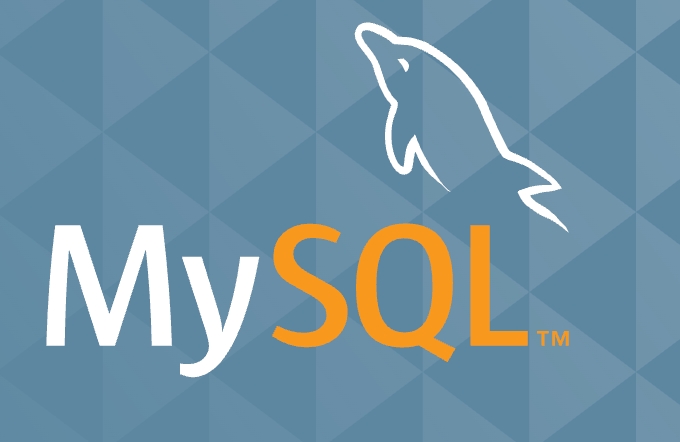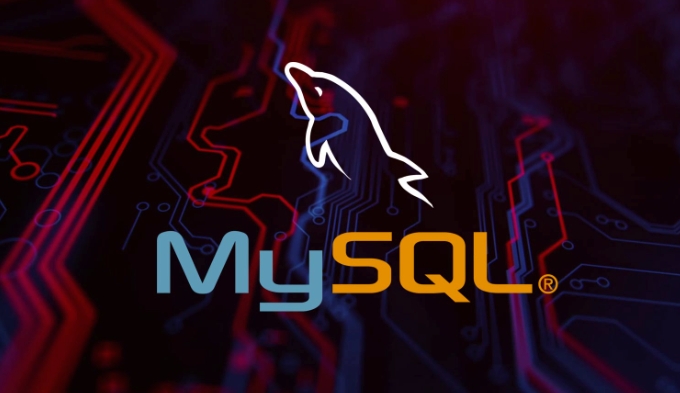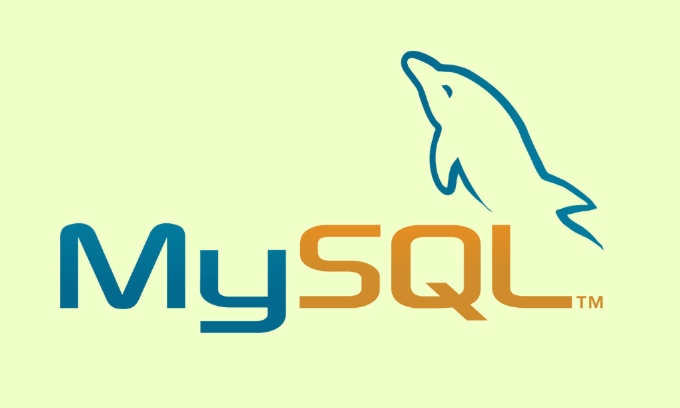To enable MySQL remote access, you need to modify bind-address to 0.0.0.0 and check the firewall and security group release port 3306; a dedicated remote user should be created and permissions should be assigned as needed to avoid using root remote login; firewall restrictions, SSL encryption should be enabled and DNS reverse resolution should be turned off to improve security. The specific steps include: 1. Modify the configuration file binding address and restart MySQL; 2. Create a remote user and restrict access to IP and permissions; 3. Set firewall rules and cloud platform security groups; 4. Enable SSL connection and turn off DNS resolution; 5. Regularly check permissions and network policies to ensure security compliance.

MySQL remote access and network configuration security are an important part of database deployment. Many people will encounter situations when building websites or applications that require remote connection to MySQL, but once it is not configured properly, the database may be exposed, causing the risk of data breaches or being attacked.

Here are some key points and suggestions to help you properly configure remote access to MySQL and ensure network security.
Enable remote access: Not just changing a configuration file
MySQL only allows local access by default (binding to 127.0.0.1). To enable external hosts to connect, you must first modify the binding address in the configuration file. This file is usually /etc/mysql/my.cnf or /etc/my.cnf , find the bind-address line:

bind-address = 0.0.0.0
This means that connections to all IP addresses are allowed. However, it should be noted that doing this does not mean that you can access it directly remotely. You also need to check the server's firewall settings and MySQL's own user rights.
In addition, if you are using a cloud service provider (such as AWS, Alibaba Cloud, etc.), you must also ensure that the security group rules release the ports used by MySQL (the default is 3306).

Configure user permissions: Don't use root users to log in remotely
For convenience, many people directly open remote access to root users, which is a very dangerous approach. The correct approach is to create users specifically for remote connections and limit their access.
For example, you can create a user like this:
CREATE USER 'remote_user'@'%' IDENTIFIED BY 'strong_password'; GRANT SELECT, INSERT ON your_database.* TO 'remote_user'@'%'; FLUSH PRIVILEGES;
Here are a few details to note:
-
'remote_user'@'%'means that the user can log in from any IP. If you want to allow only a specific IP, you can change%to a specific address. - Permissions should be allocated as needed and do not grant ALL PRIVILEGES in one go.
- Remember to execute
FLUSH PRIVILEGESafter modifying the permissions, otherwise it will not take effect.
Network protection measures: Firewall and SSL encryption cannot be missing
Even if you have correctly configured MySQL access permissions, you cannot ignore network-level security protection. Common practices include:
- Firewall Restrictions : Security Group Restrictions via iptables, ufw, or cloud platform Only a specific IP can access port 3306.
- Encrypted connections with SSL : Turn on SSL support for MySQL to prevent people from eavesdropping on data transmission.
- Changing the default port : Although it is not a universal solution, changing 3306 to another port can reduce some of the risks brought by automated scanning.
For example, if you want to force a user to use SSL connection, you can add:
GRANT USAGE ON *.* TO 'secure_user'@'%' REQUIRE SSL;
In this way, the client must enable SSL to connect successfully.
Beware of connection delays caused by DNS reverse resolution
Sometimes you will find that remote connection to MySQL is particularly slow and even fails occasionally. This may be due to MySQL enabling reverse DNS resolution (host name lookup). It tries to convert the IP to hostname every time it connects, which can cause latency if DNS is unstable or not configured well.
The solution is to add it in the configuration file:
skip-name-resolve
At the same time, you can only use an IP address to specify access permissions in the authorization table, for example:
GRANT SELECT ON db.* TO 'user'@'192.168.1.100';
Instead of using the hostname.
Basically that's it. MySQL's remote access configuration may seem simple, but if you do not pay attention to permission control, network policies and encryption mechanisms, it is easy to leave security risks. As long as you set it step by step according to actual needs, connectivity can be guaranteed without sacrificing security.
The above is the detailed content of Securing MySQL Remote Access and Network Configuration. For more information, please follow other related articles on the PHP Chinese website!

Hot AI Tools

Undress AI Tool
Undress images for free

Undresser.AI Undress
AI-powered app for creating realistic nude photos

AI Clothes Remover
Online AI tool for removing clothes from photos.

Clothoff.io
AI clothes remover

Video Face Swap
Swap faces in any video effortlessly with our completely free AI face swap tool!

Hot Article

Hot Tools

Notepad++7.3.1
Easy-to-use and free code editor

SublimeText3 Chinese version
Chinese version, very easy to use

Zend Studio 13.0.1
Powerful PHP integrated development environment

Dreamweaver CS6
Visual web development tools

SublimeText3 Mac version
God-level code editing software (SublimeText3)
 Performing logical backups using mysqldump in MySQL
Jul 06, 2025 am 02:55 AM
Performing logical backups using mysqldump in MySQL
Jul 06, 2025 am 02:55 AM
mysqldump is a common tool for performing logical backups of MySQL databases. It generates SQL files containing CREATE and INSERT statements to rebuild the database. 1. It does not back up the original file, but converts the database structure and content into portable SQL commands; 2. It is suitable for small databases or selective recovery, and is not suitable for fast recovery of TB-level data; 3. Common options include --single-transaction, --databases, --all-databases, --routines, etc.; 4. Use mysql command to import during recovery, and can turn off foreign key checks to improve speed; 5. It is recommended to test backup regularly, use compression, and automatic adjustment.
 Calculating Database and Table Sizes in MySQL
Jul 06, 2025 am 02:41 AM
Calculating Database and Table Sizes in MySQL
Jul 06, 2025 am 02:41 AM
To view the size of the MySQL database and table, you can query the information_schema directly or use the command line tool. 1. Check the entire database size: Execute the SQL statement SELECTtable_schemaAS'Database',SUM(data_length index_length)/1024/1024AS'Size(MB)'FROMinformation_schema.tablesGROUPBYtable_schema; you can get the total size of all databases, or add WHERE conditions to limit the specific database; 2. Check the single table size: use SELECTta
 Handling character sets and collations issues in MySQL
Jul 08, 2025 am 02:51 AM
Handling character sets and collations issues in MySQL
Jul 08, 2025 am 02:51 AM
Character set and sorting rules issues are common when cross-platform migration or multi-person development, resulting in garbled code or inconsistent query. There are three core solutions: First, check and unify the character set of database, table, and fields to utf8mb4, view through SHOWCREATEDATABASE/TABLE, and modify it with ALTER statement; second, specify the utf8mb4 character set when the client connects, and set it in connection parameters or execute SETNAMES; third, select the sorting rules reasonably, and recommend using utf8mb4_unicode_ci to ensure the accuracy of comparison and sorting, and specify or modify it through ALTER when building the library and table.
 Implementing Transactions and Understanding ACID Properties in MySQL
Jul 08, 2025 am 02:50 AM
Implementing Transactions and Understanding ACID Properties in MySQL
Jul 08, 2025 am 02:50 AM
MySQL supports transaction processing, and uses the InnoDB storage engine to ensure data consistency and integrity. 1. Transactions are a set of SQL operations, either all succeed or all fail to roll back; 2. ACID attributes include atomicity, consistency, isolation and persistence; 3. The statements that manually control transactions are STARTTRANSACTION, COMMIT and ROLLBACK; 4. The four isolation levels include read not committed, read submitted, repeatable read and serialization; 5. Use transactions correctly to avoid long-term operation, turn off automatic commits, and reasonably handle locks and exceptions. Through these mechanisms, MySQL can achieve high reliability and concurrent control.
 Managing Character Sets and Collations in MySQL
Jul 07, 2025 am 01:41 AM
Managing Character Sets and Collations in MySQL
Jul 07, 2025 am 01:41 AM
The setting of character sets and collation rules in MySQL is crucial, affecting data storage, query efficiency and consistency. First, the character set determines the storable character range, such as utf8mb4 supports Chinese and emojis; the sorting rules control the character comparison method, such as utf8mb4_unicode_ci is case-sensitive, and utf8mb4_bin is binary comparison. Secondly, the character set can be set at multiple levels of server, database, table, and column. It is recommended to use utf8mb4 and utf8mb4_unicode_ci in a unified manner to avoid conflicts. Furthermore, the garbled code problem is often caused by inconsistent character sets of connections, storage or program terminals, and needs to be checked layer by layer and set uniformly. In addition, character sets should be specified when exporting and importing to prevent conversion errors
 Connecting to MySQL Database Using the Command Line Client
Jul 07, 2025 am 01:50 AM
Connecting to MySQL Database Using the Command Line Client
Jul 07, 2025 am 01:50 AM
The most direct way to connect to MySQL database is to use the command line client. First enter the mysql-u username -p and enter the password correctly to enter the interactive interface; if you connect to the remote database, you need to add the -h parameter to specify the host address. Secondly, you can directly switch to a specific database or execute SQL files when logging in, such as mysql-u username-p database name or mysql-u username-p database name
 Setting up asynchronous primary-replica replication in MySQL
Jul 06, 2025 am 02:52 AM
Setting up asynchronous primary-replica replication in MySQL
Jul 06, 2025 am 02:52 AM
To set up asynchronous master-slave replication for MySQL, follow these steps: 1. Prepare the master server, enable binary logs and set a unique server-id, create a replication user and record the current log location; 2. Use mysqldump to back up the master library data and import it to the slave server; 3. Configure the server-id and relay-log of the slave server, use the CHANGEMASTER command to connect to the master library and start the replication thread; 4. Check for common problems, such as network, permissions, data consistency and self-increase conflicts, and monitor replication delays. Follow the steps above to ensure that the configuration is completed correctly.
 Using Common Table Expressions (CTEs) in MySQL 8
Jul 12, 2025 am 02:23 AM
Using Common Table Expressions (CTEs) in MySQL 8
Jul 12, 2025 am 02:23 AM
CTEs are a feature introduced by MySQL8.0 to improve the readability and maintenance of complex queries. 1. CTE is a temporary result set, which is only valid in the current query, has a clear structure, and supports duplicate references; 2. Compared with subqueries, CTE is more readable, reusable and supports recursion; 3. Recursive CTE can process hierarchical data, such as organizational structure, which needs to include initial query and recursion parts; 4. Use suggestions include avoiding abuse, naming specifications, paying attention to performance and debugging methods.






